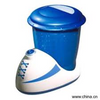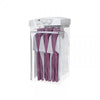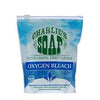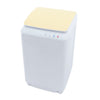Ultrasonic washing machines use ultrasound and a cleaning solvent (or in some cases just water) to clean items such as jewelry, medical instruments, watches, glasses, electronics and more. Ultrasound machines uses cavitation bubbles, which are created by the high frequency sound waves.
In addition to being very gentle, ultrasound is also able to penetrate into nooks and crannies and thus clean difficult to reach areas.
Because it is a proven technology, attempts have been made to develop ultrasonic clothes washing machines. However while there are some ultrasonic mini washing machines on the market, none have been proven to work effectively. It’s a great idea, and we have looked into making them ourselves. However, there are a number of obstacle in place which have not been overcome yet:
1. Fabric muffles the ultrasonic energy. We spoke to one of the world’s foremost authorities on ultrasonic cleaning, he gave that analog of putting a piece of clothing over your mouth and trying to talk. Fabrics are good absorbers of ultrasonic energy. So, creating enough ultrasonic energy to overcome this damping effect would be a very expensive and difficult task. Alternatively, fabrics would need to be washed one flat layer at a time, which isn’t very practical.
2. Ultrasound works best cleaning hard surfaces, whereas fabrics are flexible.
Realistically we don’t see anyone developing a viable model in the near future with the current state of the technology.
Mini ultrasound washing machines are very interesting, as you could potentially have a palm sized washing machine that is fully portable and hardly takes up any space. For example you could take it in your backpack when traveling.
You can read a more detailed history of ultrasonic washing machines at
http://www.ctgclean.com/tech-blog/2012/11/washing-clothes-with-ultrasonics/













